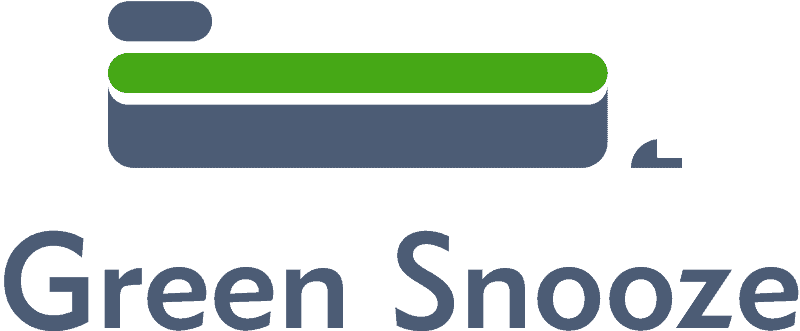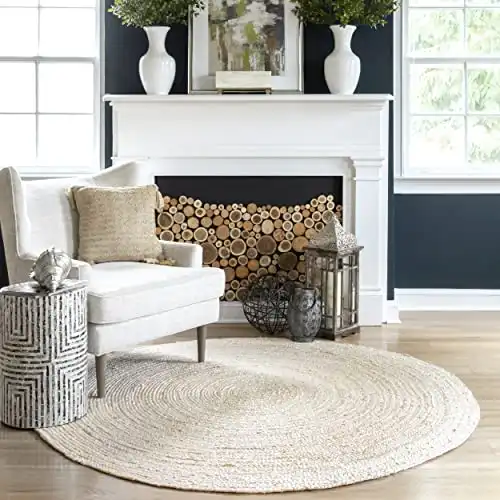- You are here:
- Home »
- Non Toxic Home Poducts »
- Can Carpet Be Toxic?
Is Carpet Toxic?
Carpet is often one of the sources of toxins in our homes, as it can be made with synthetic materials and chemicals that can be released into the air. VOCs, or volatile organic compounds, are emitted from carpets as they off-gas, and these can include harmful chemicals like formaldehyde and benzene.
Carpets can also harbor dust mites, mold, and other allergens, which can trigger asthma and other respiratory problems. In this article, we’ll take a look at the potential health risks of carpet, as well as some tips for choosing healthier options.
What Are Its Main Carpet Components?
A carpet is a floor covering made from materials such as wool, cotton, synthetic fibers, or a combination of these. The carpet backing is made of jute, latex, or polypropylene. The carpet pile is made of tufts of yarn that are looped, cut, or twisted.
Carpeting can also contain glues and adhesives that can be a source of hazardous chemicals. These toxic substances can be released into the air, posing a health risk to humans and animals.

What Are the Toxic Components of Conventional Carpets?
Conventional carpets are loaded with toxic chemicals. Here are some of the most common:
- Flame retardants: Flame retardant chemicals are added to carpets to help them meet government flammability standards. Unfortunately, they’re also linked to cancer, hormone disruption, and other serious health problems.
- Pesticides: Carpets are often treated with pesticides, such as permethrin, to protect against pests like moths and beetles. These chemicals can be harmful to your health, especially if you have young children or pets who spend a lot of time on the floor.
- Volatile organic compounds (VOCs): Carpets emit VOCs, which are chemicals that can cause respiratory problems, headaches, and other health issues.
- Antimicrobials such as pyrithione zinc and potassium oleate are commonly used in carpeting to prevent the growth of mold and mildew. However, these chemicals can also be toxic to your health.
- Stain Repellents: Many carpets are treated with stain repellents, such as perfluorinated chemicals (PFCs), to help prevent stains. However, PFCs have been linked to cancer, hormone disruption, and other health problems.
- SBR latex: This type of synthetic latex is often used in carpet backing and can contain harmful substances like styrene and butadiene. These chemicals can off-gas into your home, causing respiratory problems, headaches, and other health issues.
- Fly ash: Fly ash is a byproduct of coal combustion and is often used as filler in carpet backing. It can contain hazardous chemicals and heavy metals like arsenic, lead, and mercury, which can be toxic if ingested.
- Toxic glues: Carpets are often glued with adhesives containing harmful chemicals like toluene and xylene. These substances can off-gas into your home, causing different health issues and allergic reactions in people with chemical sensitivities.
What Are the Health Risks Associated with Carpeting?
Synthetic carpets are made of petroleum-based materials and can release volatile organic compounds (VOCs). VOCs can cause eye, nose and throat irritation, headaches, dizziness and nausea. They may also cause liver, kidney and central nervous system damage.
Carpeting also presents a risk for dust mites, which are tiny creatures that thrive in humid environments. Dust mites are a common cause of asthma and allergies.
Read More: Best Natural Carpet Odor Eliminators
How Can you Reduce your Exposure to Carpet Toxins?
There are a few things you can do to reduce your exposure to carpet toxins:
- Vacuum regularly. This will help to remove any toxins that have been released into the air.
- Choose a carpet made from natural fibers, such as wool and cotton. These fibers are less likely to release toxins. The backing should be made of natural materials as well, such as cotton or latex.
- Choose hard flooring options for areas where people spend a lot of time, such as the living room or bedroom.
- Keep your indoor air clean by opening windows frequently and investing in an air purifier.
- Consider removing your synthetic carpet altogether. This may be the best way to reduce your exposure to carpet toxins.
- Ventilate your home. This will help to circulate fresh air and reduce the concentration of toxins in the air.
- Avoid using harsh chemicals to clean your carpet. Stick to natural carpet cleaners or those that are specifically designed for use on carpets.

Best Alternatives to Traditional Carpeting
There are a number of alternatives to traditional carpeting that can be used in your home. These options include:
- Hardwood floors: Hardwood floors are a great option for those looking to avoid carpet toxins. They are easy to clean and maintain, and they provide a natural look to your home. Hardwood floors can be finished with natural and non toxic protective oil.
- Floor Tiles: Floor tiles are another great alternative to carpet. They are easy to clean and maintain, and they come in a wide variety of colors and styles. Floor tiles can also be finished with natural and non toxic protective sealants.
- Non Toxic Carpet: There are a number of carpets on the market that are made from natural fibers and do not contain harmful toxins. These carpets are a great option for those looking to avoid exposure to carpet toxins.
- Natural Area Rugs: Natural area rugs are a great way to add color and style to your home without the worry of exposure to carpet toxins. They are available in a variety of materials, including wool, cotton, and jute. You can also buy natural rug pads made of latex or felt to protect your floors and extend the life of your rug.
- Stone: If you’re looking for a durable and toxin-free flooring option, stone is a great choice. It’s also a good choice if you’re worried about moisture damage, as it’s resistant to water and stains. Stone flooring can be expensive, but it will last a lifetime if properly cared for.
- Cork: Cork is another great toxin-free flooring option. It’s soft and comfortable underfoot, and it comes in a variety of colors and patterns. Cork is also a good choice for homes with allergies, as it’s resistant to dust mites.
The Benefits of Choosing Organic, Non-Toxic Carpets
There are a number of benefits to choosing organic, nontoxic rugs and carpets. These benefits include:
- Reduced exposure to toxins and chemicals: Organic carpets are made with natural materials that are free of toxins and chemicals. This means that you won’t be exposed to these harmful substances when you’re in your home.
- Improved indoor air quality: Natural carpets can help to improve the quality of the air in your home. This is because they don’t release toxins into the air like synthetic carpets do.
- Less impact on the environment: Organic carpets are made from sustainable materials that have a less negative impact on the environment. These carpets are biodegradable, so they won’t contribute to landfill pollution.
- Safety for children and pets: Because these carpets don’t contain toxins or chemicals, they are a safer option for homes with children and pets. This is especially important for homes with young children or animals that spend a lot of time on the floor.
- Comfortable and stylish: Non toxic carpets are available in a variety of styles and colors. This means that you can find an option that will match your home décor. They are also very soft and comfortable, making them a pleasant addition to any room.
- Durability: Many carpets are made from natural fibers like wool and cotton, which are known for their durability. This means that you’ll be able to enjoy your carpet for many years to come.

How to Find a Non Toxic Carpet?
A non toxic carpet will ideally be made of pure, untreated fibers like wool, jute, sisal or cotton. The adhesive should be zero-VOC. You can find carpets that use natural latex adhesive, completely free of VOCs. Certifications like Greenguard or Green Label Plus can be used to identify low-emitting carpets, but don’t guarantee that a carpet is completely nontoxic.
The best way to be sure you’re getting a nontoxic carpet is to buy from a reputable retailer who can answer all of your questions about the materials and manufacturing process.
When you’re looking for a nontoxic carpet, avoid carpets made of polypropylene (also called olefin or polyethylene), nylon 6, or PVC. These materials are often treated with toxic chemicals like stain-resistant treatments, fire retardants, and antimicrobials. If you do choose to buy a carpet made of one of these materials, make sure it is certified by Greenguard or Green Label Plus and avoid any carpet with an antimicrobial treatment.
When shopping for a non toxic carpet, it is important to read the labels and ingredient lists carefully. Many carpets that claim to be “green” or “eco-friendly” may still contain harmful chemicals.
If you are unsure about a particular carpet, it is always best to err on the side of caution and choose a different one. There are plenty of non toxic carpets on the market, so there is no need to take risks with your health.
Where to Buy a Non Toxic Carpet?
When it comes to buying a nontoxic carpet, there are a number of great options available. You can find these carpets at most major retailers, as well as online. Here are a few of our favorite places to buy nontoxic carpets:
Nature´s Carpet: They offer carpets made with natural materials – wool, rubber latex and jute. It is eco-friendly and biodegradable, unlike synthetic carpets. Nature´s Carpets have passed the CRI Green Label Plus standards for being low VOC. These carpets don’t not off-gas, making them a healthier choice for your home.
Earth Weave: This company offers natural carpets made of wool that is undyed and untreated, making it a safe choice for homes with children or pets. The primary backing is made from hemp and cotton, which is bound to the yarn with all-natural rubber. The secondary backing is made of jute.
This gives the carpet added durability and helps to prolong its lifespan. Additionally, the jute backing is a sustainable material that helps to make this a zero VOC carpet. When installed properly, these carpets will provide years of enjoyment while helping to protect the environment.
Safavieh: Safavieh is a leading retailer of high-quality, nontoxic carpets. They offer a wide range of styles and colors to choose from. On their website, you´ll find natural fiber rugs and carpets made of wool, jute, sisal, and cotton. Combined with a non toxic rug pad, these carpets are a great choice for a healthy home.
NuLoom: NuLoom is another great option for nontoxic carpets. They offer a wide variety of styles, colors, and materials to choose from. Their carpets are made of cotton, wool, jute, and sisal.
Conclusion
Carpet is not inherently toxic, but it can harbor harmful toxins and particles that can be released into the air. Vacuuming and other cleaning methods can help to reduce the amount of these contaminants in your home, but it is also important to choose non toxic, natural carpet made from low-emitting materials and to avoid using chemicals or other products that could release harmful toxins into the air.
Read More: Safavieh vs NuLoom Review
About the Author Kamila Flieger
My name is Kamila, and I'm passionate about researching non-toxic, organic products for the home. I believe it's so important to create a safe and healthy environment for our families, and I enjoy helping others do the same.




